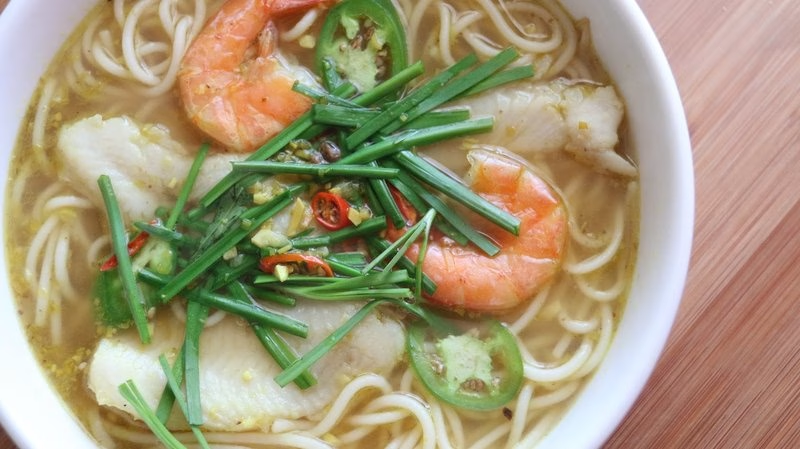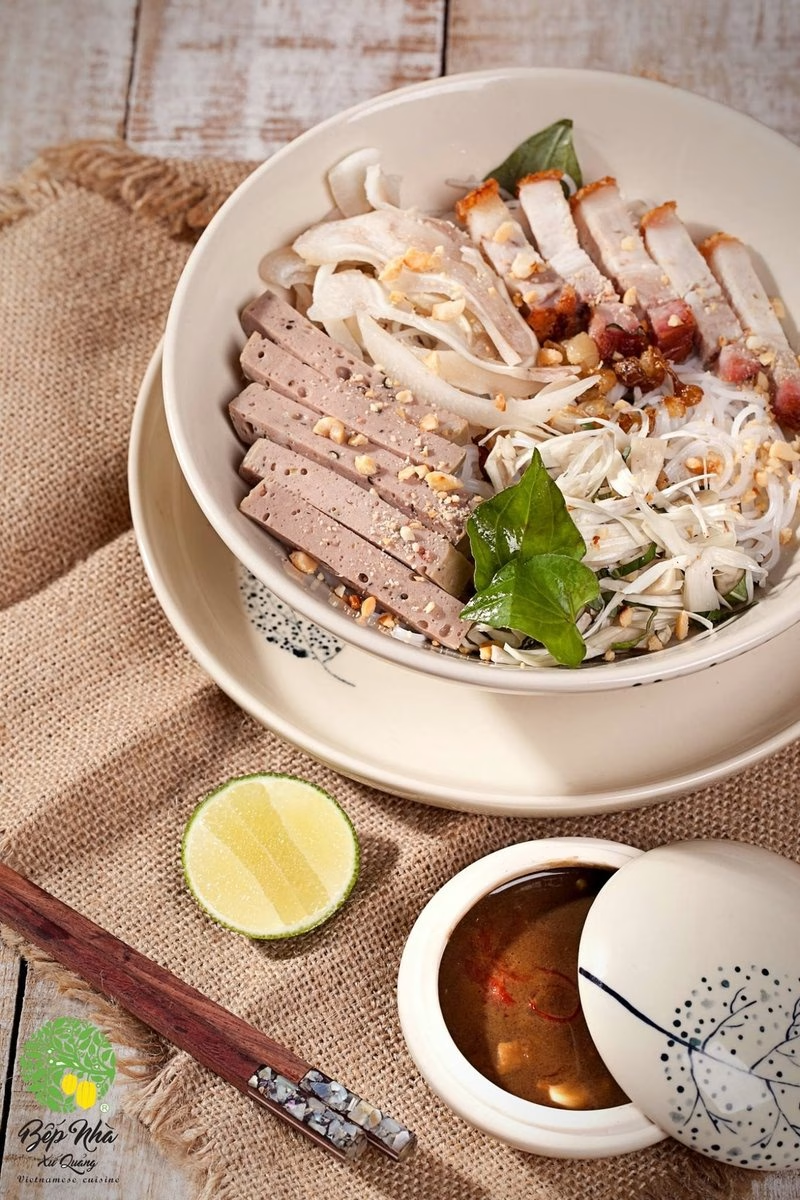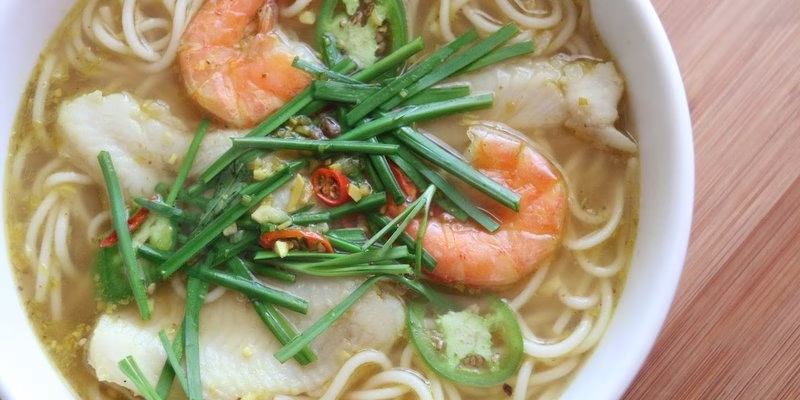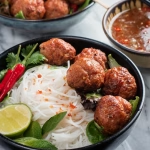
Bun Mam, a beloved Vietnamese dish, is more than just a meal; it’s a delightful experience of flavors that dance on your taste buds. Originating from the southern regions of Vietnam, this fermented fish noodle soup captures the essence of traditional Vietnamese cuisine with its unique mix of fermented fish, aromatic herbs, and fresh vegetables. The dish is cherished not only for its rich taste but also for the warm, nostalgic memories it evokes among locals and travelers alike.
In this article, you’ll discover how to make Bun Mam (Fermented Fish Noodle Soup) at home, including all the essential ingredients, step-by-step instructions, cooking tips, and nutritional information. Whether you’re looking for traditional methods or modern twists, we’ve got you covered with everything you need to know about this flavorful soup. Get ready to savor the essence of Bun Mam!
Ingredients
| Ingredient | Measurement | Description |
|---|---|---|
| Rice vermicelli noodles | 200 grams | The foundation of Bun Mam, these noodles soak up the flavors of the soup perfectly. |
| Fermented fish (mắm) | 100 grams | This ingredient provides the signature tangy taste that’s essential for authentic Bun Mam. |
| Pork belly | 150 grams | Adding richness and depth to the soup, the pork belly complements the fermented fish beautifully. |
| Fresh shrimp | 100 grams | These plump shrimp add a delicate sweetness and texture to the dish. |
| Green beans | 100 grams | Providing a crisp texture, green beans add nutrition and color to the soup. |
| Garlic | 2 cloves | Fresh garlic enhances the aroma and depth of flavor in Bun Mam (Fermented Fish Noodle Soup). |
| Onion | 1 medium | The base of the soup, sautéed onion brings sweetness and richness, tying everything together. |
| Fish sauce | 2 tablespoons | This adds an extra umami punch, elevating the overall taste of the Bun Mam. |
| Rice vinegar | 1 tablespoon | Helps balance the flavors with a touch of acidity. |
| Fresh herbs (basil, mint) | As needed | These herbs bring freshness and aromatic flavor to every bowl. |
Step-by-Step Instructions
- Prepare the Ingredients: Start by soaking the rice vermicelli noodles in warm water for about 20 minutes until they soften. While that’s happening, thinly slice the pork belly and devein the shrimp. Chop the onion and garlic, and set everything aside for easy access.
- Cook the Base: In a large pot, heat a tablespoon of oil over medium heat. Add the chopped onions and garlic. Sauté until they turn golden and fragrant, creating a flavorful base for your Bun Mam (Fermented Fish Noodle Soup).
- Combine the Fermented Fish: Add the fermented fish to the pot, stirring well so it mixes with the onion and garlic. Allow it to cook for a few minutes until the aroma fills your kitchen—trust us, this step is crucial for an authentic taste!
- Add Broth: Pour in about 1.5 liters of water and bring it to a boil. Once boiling, add the pork belly and let it simmer on low for about 20 minutes. This will allow the flavors to meld beautifully.
- Include the Shrimp and Beans: After 20 minutes, add the shrimp and green beans into the pot. Cook for an additional 5-7 minutes until the shrimp is pink and the beans are tender yet still crunchy.
- Season the Soup: Now it’s time to season! Stir in the fish sauce and rice vinegar, adjusting them according to your taste preference. A little taste test here can make all the difference!
- Assemble & Serve: In individual bowls, place a portion of the soaked vermicelli noodles. Ladle the hot soup over them and top with fresh herbs. Serve immediately to enjoy the delightful flavors of your homemade Bun Mam (Fermented Fish Noodle Soup).
Pro Tips
- Fermented Fish Matters: The type of fermented fish you use can significantly affect the flavor of your soup. Make sure to choose a high-quality product for the best results.
- Fresh Herbs are Key: Don’t skip the fresh herbs; they add brightness and balance to the rich soup. Thai basil, mint, or cilantro works best!
- Customize Your Soup: Feel free to experiment with other proteins like tofu or chicken, and add different vegetables like bean sprouts for added crunch.
- Make Ahead: Bun Mam tastes even better the next day! Make a big batch and let the flavors develop overnight before serving.
- Watch the Salt: Since fermented fish and fish sauce are already salty, keep an eye on your overall salt levels to avoid overpowering flavors.
Nutritional Information
| Nutrient | Per Serving |
|---|---|
| Calories | 450 kcal |
| Protein | 25 g |
| Carbohydrates | 60 g |
| Saturated Fats | 5 g |
| Fiber | 4 g |
| Cholesterol | 70 mg |
| Sugars | 3 g |
| Fat | 15 g |
FAQs
- What is the best way to store Bun Mam (Fermented Fish Noodle Soup)?
- Store it in an airtight container in the refrigerator for up to 3 days. Reheat gently to preserve flavors.
- Can Bun Mam (Fermented Fish Noodle Soup) be made vegan or gluten-free?
- Absolutely! Use tofu and gluten-free noodles to customize this dish to your dietary needs.
- What are the best side dishes to serve with Bun Mam (Fermented Fish Noodle Soup)?
- Fried spring rolls or a simple side salad complement this dish wonderfully!
- How long does it take to prepare Bun Mam (Fermented Fish Noodle Soup)?
- Preparation and cooking together take about 1 hour. Perfect for a cozy evening meal!
- Can I freeze Bun Mam (Fermented Fish Noodle Soup) for later?
- You can freeze the broth separately, but it’s best to add fresh noodles when serving after thawing.
- What is the traditional way to serve Bun Mam (Fermented Fish Noodle Soup)?
- Traditionally, it’s served in a deep bowl with a side of fresh herbs and lime wedges for added zing!
- Is Bun Mam (Fermented Fish Noodle Soup) healthy?
- Yes! It’s packed with protein, vitamins from the vegetables, and is relatively low in calories if enjoyed in moderation.
- Can I adjust the spice level in Bun Mam (Fermented Fish Noodle Soup)?
- Definitely! Add chili peppers or hot sauce to elevate the spice level according to your preference.
Bun Mam (Fermented Fish Noodle Soup) is a delightful dish that blends rich traditions and vibrant flavors into a bowl of warmth. Making it at home is not just about the cooking; it’s about experiencing the culture and history behind every ingredient. As you enjoy this soup, you’ll find comfort and joy in each flavorful spoonful.
Why not give this recipe a try? You might just create a new favorite dish in the process. Let us know your experience in the comments and share your tips or variations with us!






